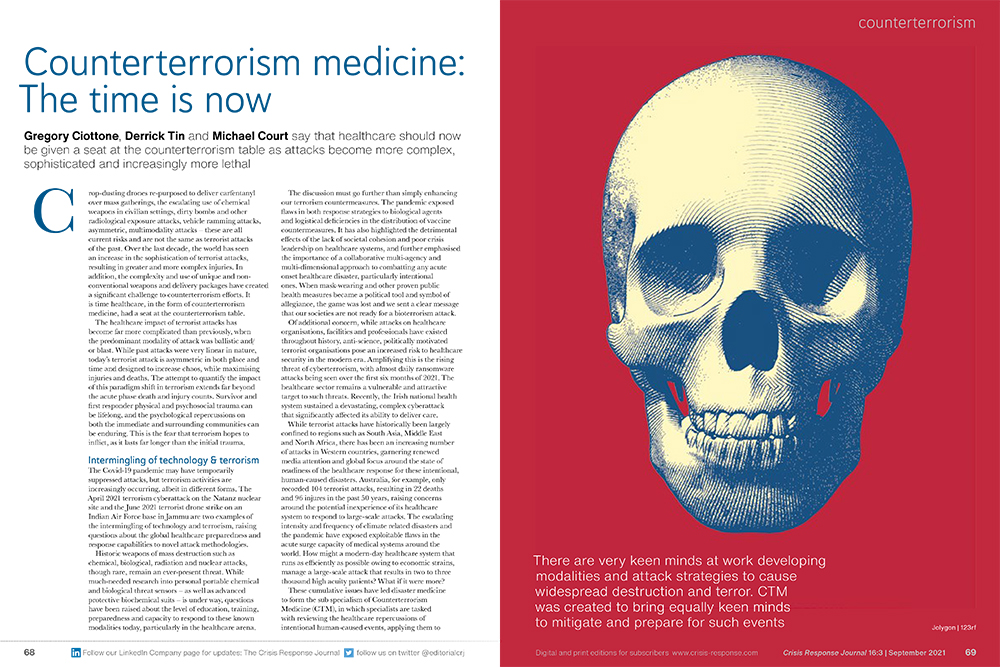CRJ 16:3 out now!
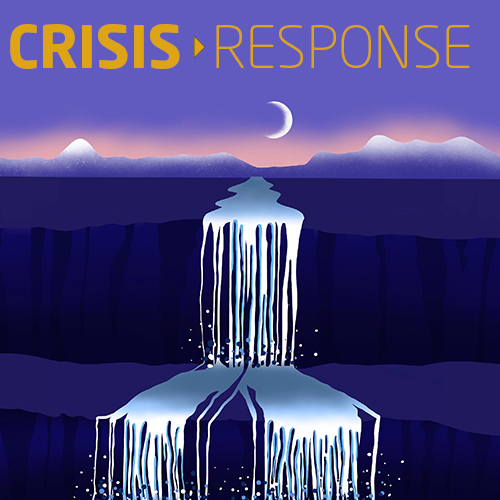 This edition looks at climate and weather-related events around the world, including an examination of the new IPCC report by Claire Sanders. Milad Zamanifar contends that climate is not wholly to blame for recent disasters brought about by extreme weather, pointing out that governance, planning and past decisions have also amplified its effects. Meanwhile, Benoit Vivier of EENA looks at public warning systems, saying that apps should not be considered as an alternative to location-based SMS or cell broadcast solutions. He says: “It is essential to deploy modern warning systems with clear and well-defined protocols on how to use them.”
This edition looks at climate and weather-related events around the world, including an examination of the new IPCC report by Claire Sanders. Milad Zamanifar contends that climate is not wholly to blame for recent disasters brought about by extreme weather, pointing out that governance, planning and past decisions have also amplified its effects. Meanwhile, Benoit Vivier of EENA looks at public warning systems, saying that apps should not be considered as an alternative to location-based SMS or cell broadcast solutions. He says: “It is essential to deploy modern warning systems with clear and well-defined protocols on how to use them.”
Turning to extreme heat and its consequences, Lina Kolesnikova and Casey Brunelle report on the dangers of heatwaves and their effects on emergency services and planning operations, while Tony Moore and Anna Averkiou report on the devastating wildfires in Turkey and Greece, respectively. Key Network Partner PIX4D describes how drones and their associated software can help in preventing wildfire spread, evacuations and in recovery analysis.
We then turn to societal resilience. In the light of the UK Government’s Call for Evidence to contribute towards the formation of a national resilience strategy, Bruce Mann starts the debate on an Independent Review of the Civil Contingencies Act 2004 and its supporting arrangements, commissioned by the National Preparedness Commission. Mann, Kathy Settle and Andy Towler, are all soliciting feedback from CRJ readers for this review.
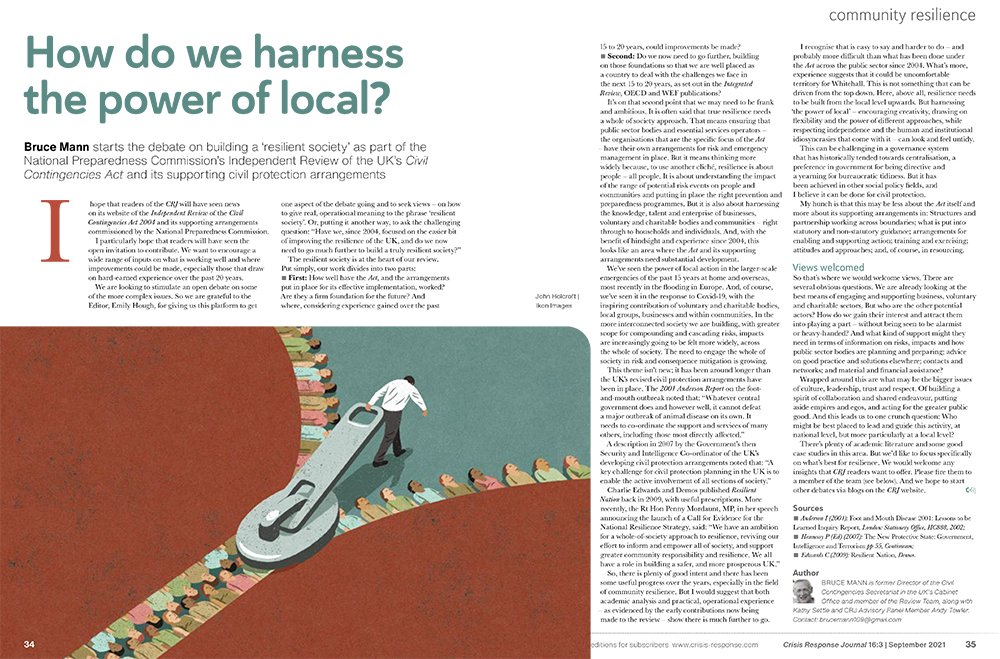
Meanwhile, EPS Chair Jacqui Semple, says in her article: “What we saw during the Covid-19 crisis (in the UK) was a lack of emergency planners invited to be involved by Government at the very highest levels of planning in the same way as colleagues in medicine or epidemiology. Committees such as the scientific advisory group for emergencies (SAGE) did not appear to include any independent advisers on emergency planning and management.” This, she says: “Cannot happen again.”
Part of CRJ’s mission and ethos is to bring new thoughts and voices into the resilience and emergency planning fold. As Gianluca Pescaroli says earlier in the edition: “No single person has the knowledge to understand complex events alone, we need each other to gain the full picture.” With this in mind, we are delighted to feature a fascinating article by Patrick Duggan and Stuart Andrews, who have just published their first research report into the strategic importance of cities’ performances to emergency and resilience planning. And we look at The Common Room, a community-based project seems set to be a model example of how to empower individuals in communities with purpose, which will strengthen a resilient society.
Next, Andrew Staniforth and David Fortune introduce project CORE, a three-year endeavour that aims to improve the societal response to disasters at the most local level.
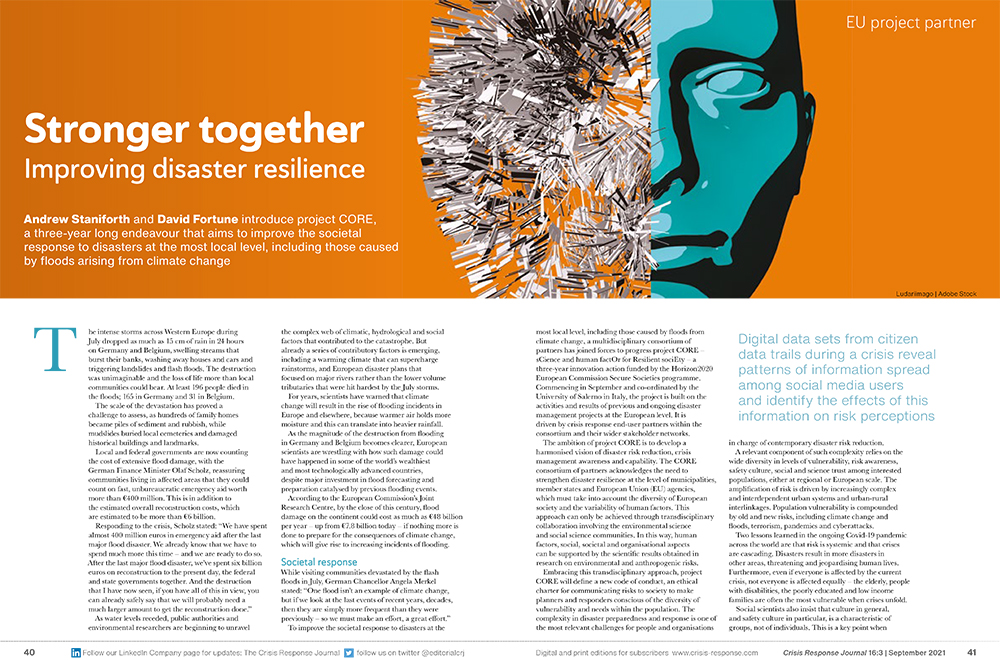
On Covid-19, Emily Hough speaks to Gilles Mahieu, Governor of Walloon Brabant in Belgium, about the province’s response to the pandemic, which incorporated its existing Rapid Reflection Force, a concept propounded by CRJ Advisory Panel Member, Patrick Lagadec. Louise Davidson and team report on research into how psychological factors might affect interoperability between different emergency services during a pandemic, and Advisory Panel Member Elton Cunha and colleagues provide a snapshot of the situation in Brazil.
Turning to continuity, management and leadership, Tony Jaques advises organisations that they should now be taking stock of their crisis management plans in preparation for the next crisis. Eric McNulty from the NPLI also challenges us to reconsider how we think about future crises, saying that the trio of tenets – trust, adaptive capacity and resilience – are key players as complex, novel incidents increase in scale and frequency. And Rob Fagan’s Part III of his article on cross-training in organisations, gives practical advice on how this concept is an: “Investment that brings great rewards and satisfaction for individual and team confidence, increases organisational resilience and can improve your bottom line.”
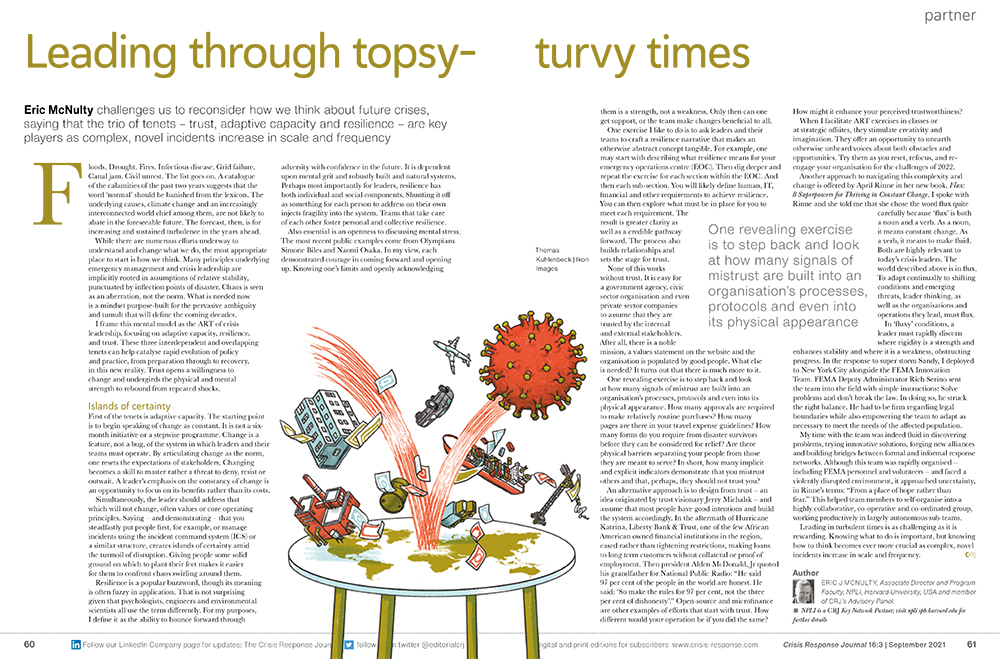
In our terrorism and security feature, Matthew Fields shares his research on the outcome of hostage negotiations through proof of life messages, while Gregory Ciottone, along with his colleagues, outline the reasons why counterterrorism medicine should be given a seat at the planning table. Phil Trendall and Andy Blackwell both provide analyses of the first Volume of the Manchester Arena Inquiry, homing in on threat fatigue and complacency as great dangers, while Adam Berry of Initsys takes a novel and engaging approach in describing a fictitious shooting incident at a shopping mall and the technology that can help bring an incident under control. Keyaan Williams then provides an overview of mutual expectations when it comes to organisational cyber insurance.
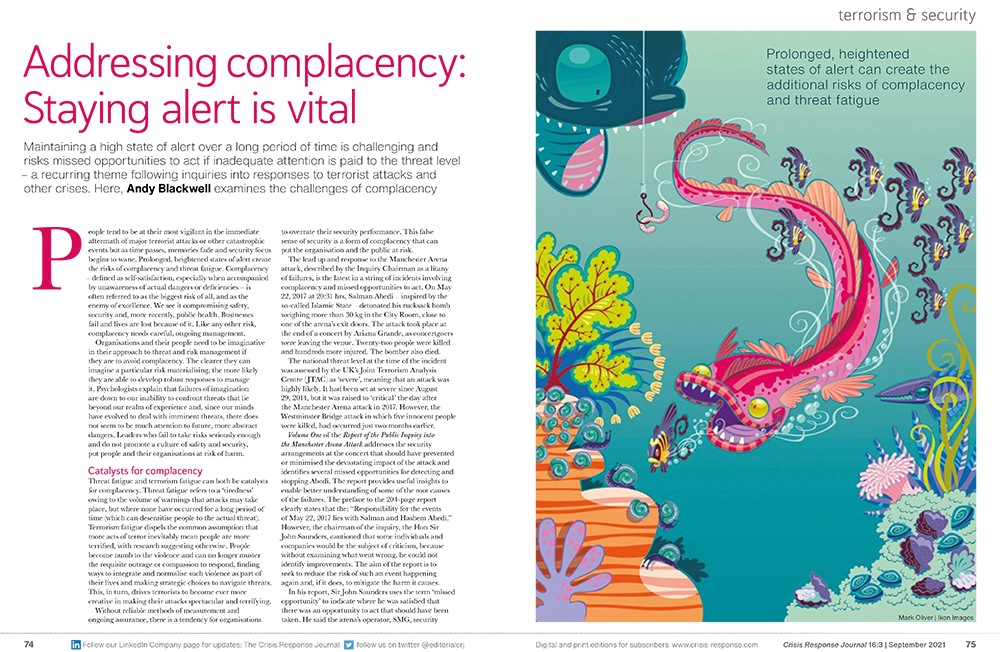
CRJ is excited to bring readers its first guest-edited feature in this edition. Christine Jessup presents an overview of Australia, viewed through the lens of two basic elements – fire and water – and the challenges she presents to 21st Century crisis management. Jessup speaks to Professor David Bowman about pyrogeography and wildfires, Professor Martin Thoms about water ecosystems and Sally MCkay about recovery and resilience, before analysing the way forward.
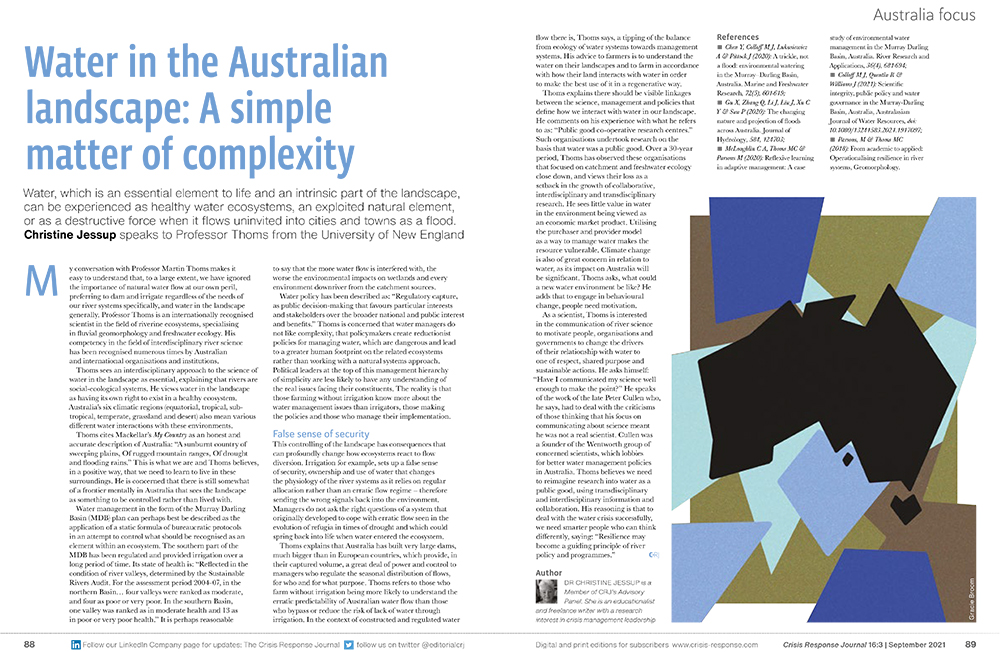
Plus, Alois Hirschmugl describes a training course that enhances interactions between civilian, police and military responders in West Africa, and Claire Sanders interviews Professor Hugues Guyot about his vetinary medicine disaster work and the rescue of dozens of animals in the Belgian floods this summer.
The edition is due to be published on September 6, when all articles will be made available for subscribers online, and hard copies will be mailed out. Click here for details on how to subscribe. Some of these articles will be free to read, so keep on checking back!
